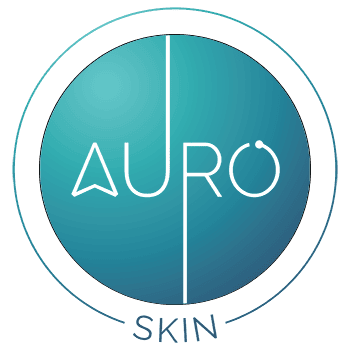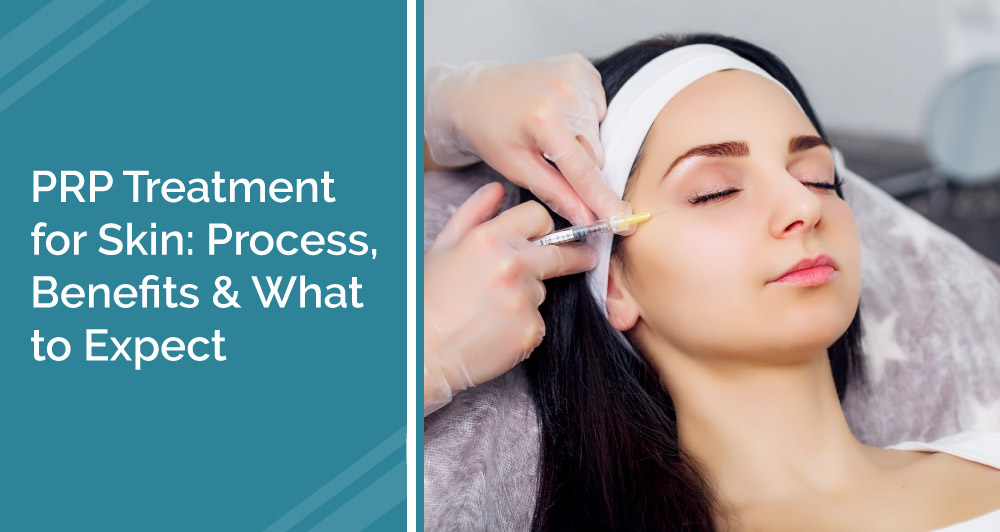September 24, 2025
Platelet-rich plasma (PRP) therapy has gained significant attention in dermatology for its role in natural skin rejuvenation. Unlike other cosmetic procedures that rely on synthetic fillers or surgery, PRP uses the patient’s own blood to stimulate healing and regeneration. By isolating the plasma rich in platelets and growth factors, dermatologists can promote collagen production, improve skin texture, and reduce visible signs of ageing. Increasingly popular among individuals seeking minimally invasive options, PRP treatment offers a safe and evidence-backed approach. Let’s explore its benefits, process, and who is qualified for this modern skin treatment procedure.
A] What is PRP Treatment for Skin?
PRP, or Platelet-Rich Plasma, is a treatment that harnesses the body’s own healing properties. A small sample of the patient’s blood is drawn and processed using the high-speed machine to separate plasma rich in platelets and growth factors. These natural components are then injected or applied into targeted areas of the skin to stimulate repair and regeneration. By boosting collagen production and accelerating cell renewal, PRP can address concerns such as uneven skin tone, acne scars, fine lines, and early signs of ageing. This makes it an appealing choice for patients wanting natural, non-surgical skin rejuvenation.
B] Benefits of PRP Treatment for Face
1. Stimulates collagen production
One of the main benefits of Platelet-Rich Plasma (PRP) treatment for the face is its ability to stimulate collagen production. Collagen is vital for maintaining firm and youthful skin, but levels of collagen naturally decline with age. By activating fibroblasts, PRP enhances collagen synthesis, leading to smoother and firmer skin over time.
2. Improves skin elasticity and texture
Another key advantage is the improvement of skin elasticity and texture. Patients often notice their skin feels more supple and resilient after undergoing a series of PRP sessions. This is particularly beneficial for those with mild sagging or roughness.
3. Reduces the appearance of fine lines, pores, and acne scars
PRP also helps to reduce the appearance of fine lines, enlarged pores, and acne scars. The regenerative properties of platelets encourage new tissue formation, which softens scar tissue and refines the skin’s surface. Patients who have struggled with uneven texture due to acne often find this a welcome benefit.
4. Enhances skin tone uniformity
PRP contributes to a more even skin tone. Hyperpigmentation and dullness can make the skin look tired, but the growth factors within PRP promote healthier skin renewal, resulting in a more uniform complexion.
5. Suitable for patients looking for a natural and non-surgical option
Lastly, PRP is an excellent option for patients looking for natural, non-surgical treatments. Since it uses the patient’s own blood, the risk of allergic reactions is minimal. Compared to fillers or invasive procedures, PRP offers a more holistic approach to skin rejuvenation, making it suitable for individuals seeking a treatment aligned with the body’s natural healing processes.
C] PRP Treatment Process for Face: Step-by-Step
1. Consultation & Assessment
The PRP treatment process for the face typically begins with a consultation and assessment. During this stage, the dermatologist reviews the patient’s medical history and examines the skin to determine whether PRP is a suitable option. Conditions such as active infections or blood-related disorders may exclude patients from treatment.
2. Blood Draw
The next step involves a simple blood draw, similar to what is done for a routine blood test. A small sample is collected, usually from the arm.
3. Centrifugation
The blood is then placed in a centrifuge machine, where it is spun at high speed to separate its components. This process isolates the platelet-rich plasma from red and white blood cells, producing a concentrate rich in growth factors.
4. Application
Once prepared, the PRP is applied to the skin. Dermatologists may use injections to target deeper layers or microneedling to allow the PRP to penetrate the skin’s surface more effectively. This stage is typically well tolerated, with only mild discomfort reported.
5. Post-Procedure Care
Finally, post-procedure care is essential. Patients may experience slight redness, swelling, or sensitivity in treated areas for a short time. Dermatologists usually advise avoiding harsh skincare products, direct sunlight, and strenuous exercise immediately after the procedure. Most patients can resume normal activities within a day or two.
The entire process is minimally invasive and usually completed in under an hour, making it convenient for those with busy schedules.
D] Who Can Benefit from PRP Treatment?
PRP treatment is well-suited for patients experiencing early signs of ageing, such as fine lines, wrinkles, or mild sagging. It is also highly effective for addressing acne scars, enlarged pores, and uneven skin texture. Patients who prefer natural treatments over synthetic fillers often consider PRP as an alternative.
However, it is not recommended for individuals with blood disorders, those on anticoagulant medication, patients with active skin infections, or those suffering from chronic illnesses. Consulting with a qualified dermatologist ensures patients can make informed decisions about their suitability for the procedure.
E] How Many Sessions Are Needed?
The number of sessions required depends on the patient’s skin condition and goals. In most cases, dermatologists recommend three to four sessions spaced around four to six weeks apart. This allows the skin adequate time to respond and regenerate between treatments.
Noticeable improvements are usually seen after the second session, though optimal results appear progressively. To maintain results, patients may be advised to undergo maintenance sessions once or twice a year. Following the dermatologist’s personalised treatment plan ensures long-lasting improvements in skin texture, elasticity, and tone.
Conclusion
Platelet-rich plasma therapy has established itself as a trusted method for non-surgical skin rejuvenation. By harnessing the healing properties of a patient’s own blood, PRP helps stimulate collagen, repair tissue, and restore natural vitality to the skin. The treatment is safe, evidence-based, and suitable for a wide range of skin concerns. Auro Skin Clinic, the best dermatologist in Mumbai, highlights that while PRP is promising, outcomes vary depending on individual needs, and consultation with a qualified dermatologist is essential. Patients considering PRP should seek expert guidance to determine suitability and design a tailored plan for their facial rejuvenation journey. Contact us today to know more!
We also provide PRP hair treatment in Mumbai while ensuring its cost-effectiveness and maximum results. Book an appointment today!

